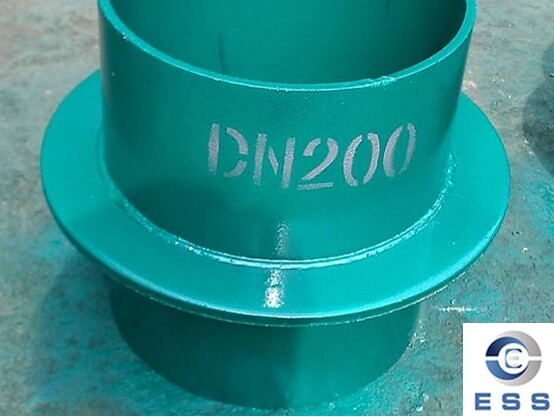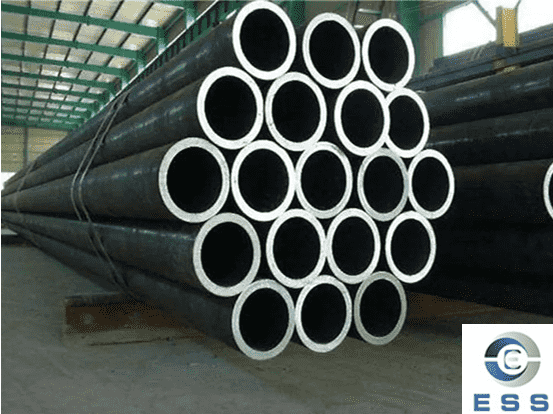Steel casing pipe size
is a key factor to consider when selecting and using steel casing pipe. The
size specification parameters directly affect the performance and installation
requirements of steel casing pipe. The size of steel casing pipe for different
purposes will also be different. Generally speaking, the size of steel casing
pipe follows national or regional standards, such as the American National
Standard (ANSI), the American Society of Mechanical Engineers Standard (ASME)
or the German Industrial Standard (DIN), etc., to ensure the quality and
compatibility of the product.

Length selection
The length of the steel casing pipe should
be determined according to the length of the protected object and the
installation environment. When passing through building structures such as
floors and walls, the length of the steel casing pipe should be slightly longer
than the part of the protected pipe or cable passing through the structure,
generally about 100-200mm longer, to ensure that the passing part is fully
covered and plays a good protective role. For example, in a building, when the
pipeline passes through a 300mm thick floor, the length of the steel casing
pipe can be selected from 500-600mm, so that the steel casing pipe has a
certain extension length above and below the floor.
Inner diameter selection
1. Consider the outer diameter of the
protected object
The inner diameter of the steel casing pipe
should be larger than the outer diameter of the protected object (such as
pipes, cables, etc.). Generally speaking, a gap of 10-20mm should be reserved
to facilitate installation and possible subsequent maintenance operations. For
example, if you want to protect a pipe with an outer diameter of 50mm, the
inner diameter of the steel casing pipe can be selected as 60-70mm. Such a gap
can prevent the pipe from being squeezed between the pipe and the steel casing pipe
when the pipe expands or contracts due to temperature changes, and also provide
space for operations such as applying anti-corrosion materials and wrapping
insulation materials.
2. Consider the flow rate and permeability
of the internal fluid or object
If the steel casing pipe is used to protect
the pipeline that transports fluids, the flow requirements of the internal
fluid also need to be considered. Too small an inner diameter may limit the
flow rate of the fluid and increase the flow velocity and resistance of the
fluid. For example, in chemical pipelines, according to the flow formula of the
fluid (flow rate, flow velocity, and pipe cross-sectional area), when a certain
flow rate needs to be guaranteed, a too small inner diameter will lead to too
high a flow velocity and excessive pressure drop, so the appropriate inner
diameter should be calculated according to the flow rate to ensure that the
fluid can pass smoothly.
Outer diameter selection
1. Consider the limitation of installation
space
For example, in places with limited space
such as building pipe wells and underground pipeline corridors, the outer
diameter of the steel casing pipe should be determined according to the actual
installation space. When the installation space is narrow, a steel casing pipe
with a smaller outer diameter must be selected to ensure that it can be placed
in the predetermined position. At the same time, the operating space of the
installation tool should also be considered. For example, when using a crane or
forklift to install the steel casing pipe, it is necessary to ensure that there
is enough space around for the equipment to operate normally.
2. Consider external loads and protection
requirements
When the steel casing pipe needs to
withstand external pressure, impact force or protect against harsh external
environments, a larger outer diameter can provide better strength and
stability. For example, in order to withstand the pressure generated by vehicle
driving, the steel casing pipe of the pipeline crossing under the road or
railway needs to select a steel casing pipe with a larger outer diameter and
sufficient wall thickness to ensure the safety of the pipeline. According to
empirical formulas or finite element analysis and other methods, the minimum
outer diameter required under a given external load can be calculated to select
the appropriate specification.
Wall thickness selection
1. Consider strength requirements
Determine the wall thickness according to
the working environment and load of the steel casing pipe. If the steel casing
pipe is used for oil wells or chemical pipelines that withstand high pressure,
it needs to have sufficient wall thickness to resist the internal pressure.
According to the strength theory formula of thin-walled cylinders (for hoop
stress, for internal pressure, for outer diameter, for wall thickness), the
minimum required wall thickness can be calculated when the internal pressure
and allowable hoop stress are known. Generally speaking, the wall thickness of
steel casing pipe under high pressure environment may reach 10-20mm.
2. Consider corrosion resistance and
service life
In corrosive environments, appropriately
increasing the wall thickness can extend the service life of steel casing pipe.
Because corrosion usually starts from the surface and gradually erodes inward,
thicker wall thickness can provide more margin for corrosion. For example, in
marine environments or chemical corrosive media environments, the wall
thickness may need to be increased by 2-5mm compared to steel casing pipe in
ordinary environments to ensure that the steel casing pipe will not fail due to
corrosion within a certain service life. At the same time, measures such as
anti-corrosion coatings can also be considered to further improve the corrosion
resistance of steel casing pipe.
Summary
Choosing the right steel casing pipe size
is essential to ensure the normal operation of the system. Too large or too
small a size may lead to installation difficulties, performance degradation or
safety hazards. Therefore, when selecting steel casing pipe, be sure to
determine the appropriate size specifications based on actual needs and
national or regional standards (such as ANSI, ASME, DIN, etc.).
Read more: Specifications and dimensions of oil casing or Specifications And Wall Thickness of Steel Casing Pipe













 Eastern Steel Manufacturing Co.,Ltd not only improve product production and sales services, but also provide additional value-added services. As long as you need, we can complete your specific needs together.
Eastern Steel Manufacturing Co.,Ltd not only improve product production and sales services, but also provide additional value-added services. As long as you need, we can complete your specific needs together.










